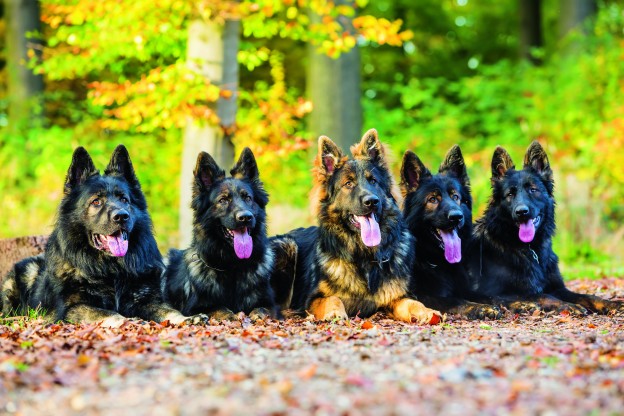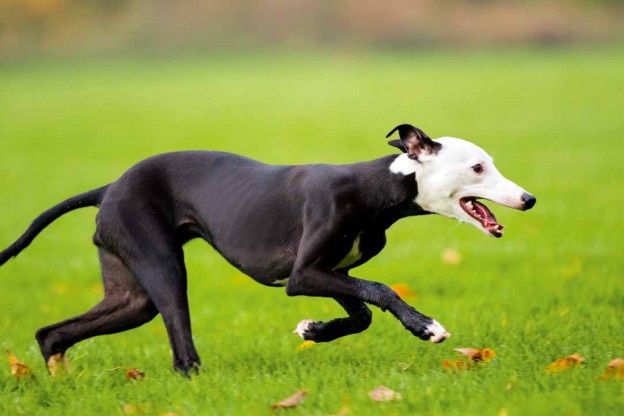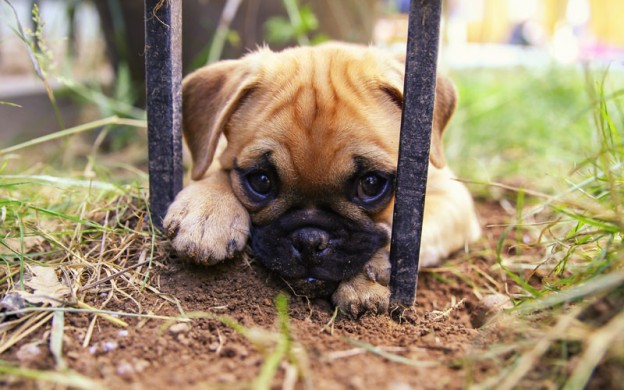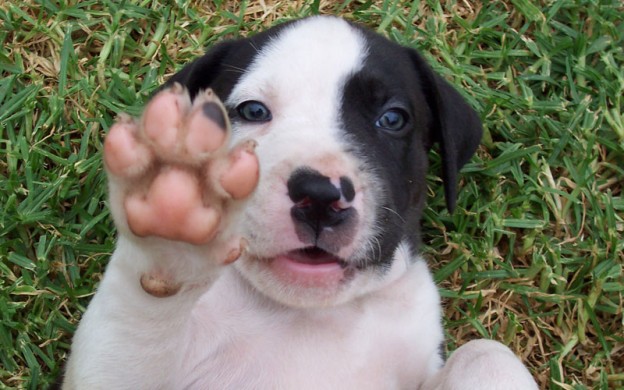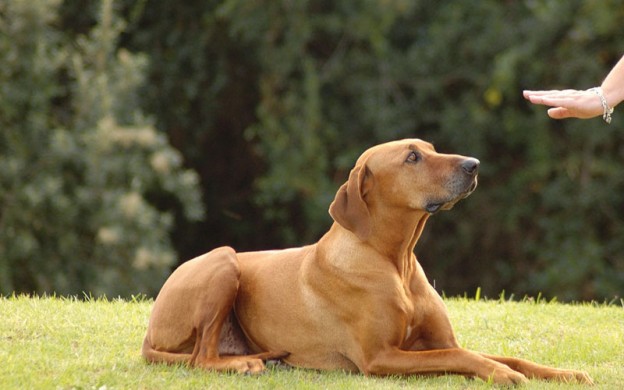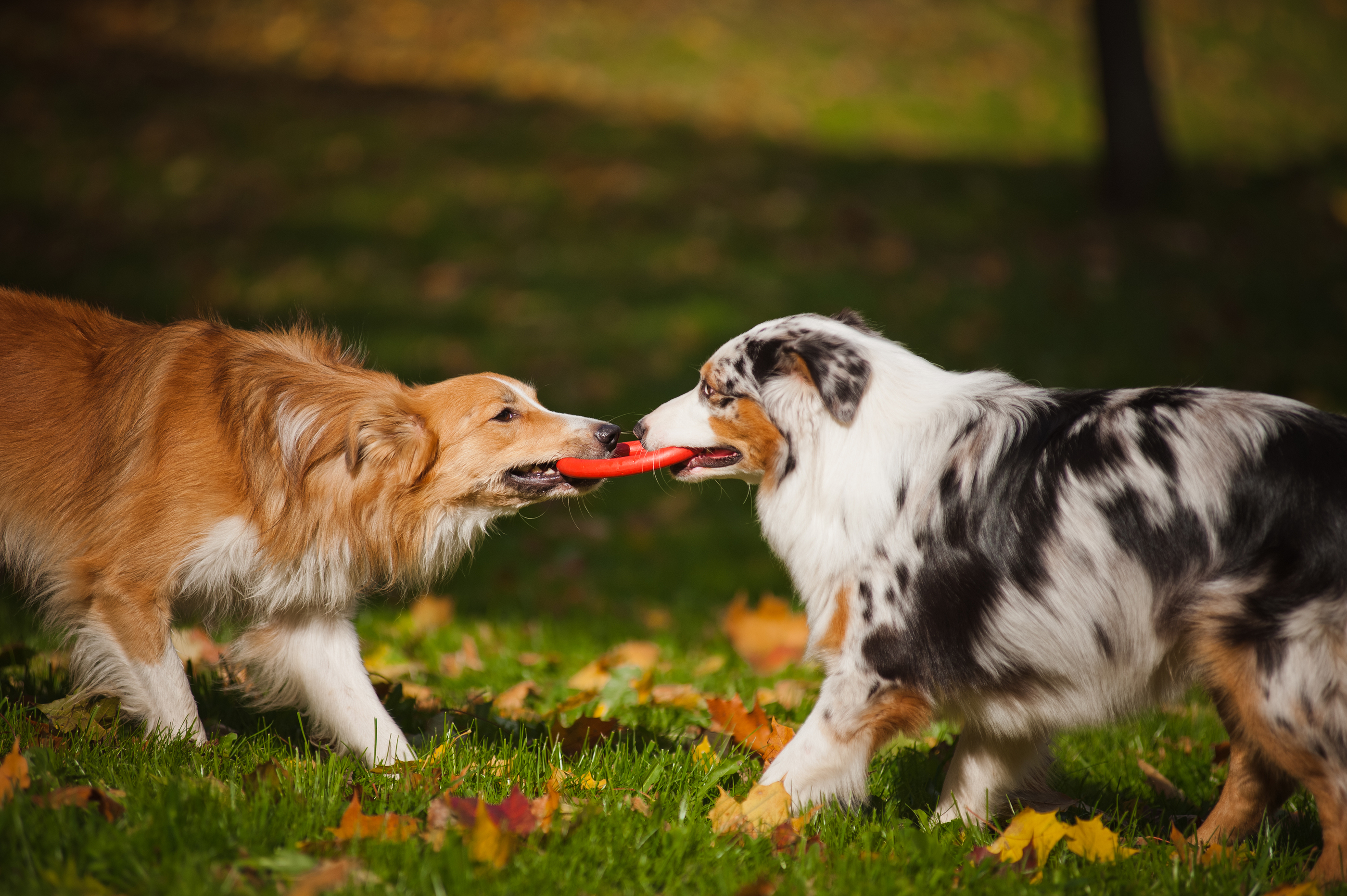
No matter whether they’re big or small, scruffy or hairless, dogs can get into dogfights. Tim Falk investigates what to do when your dog goes the biff with another pooch.
It’s something many dog owners have experienced over the years: you’re out for a walk with your dog on a lead, when an unleashed dog appears from out of the blue and tries to start trouble. Hackles are raised, warning growls dispensed and before you know it, you’re stuck in the middle of a situation that’s quickly turning nasty.
But what do you do when you find yourself with a ringside seat to a dogfight? Is it possible to break things up without getting hurt? Dogs Life speaks to two training experts to find out.
Why do dogs fight?
There are all manner of reasons why dogs get into fights. “Dogs that live with other dogs and fight usually do so over resources such as food, toys, attention or space,” says dog trainer Alexis Davison from Scholars In Collars.
“Redirected aggression is another reason that familiar dogs may fight. This occurs when a dog becomes overly aroused or displays aggressive behaviour towards a person or animal but because they cannot access the source, they redirect their aggression towards one that they can access.”
Unfamiliar dogs may also fight over resources such as a toy at the dog park. The fight may be sex related or it could be that one of the dogs is in pain. Perhaps play has become too intense and the dogs have become overly aroused.
“Many dogs that behave aggressively are motivated by fear,” says Davison. “The dog may be on leash or in an enclosed space and unable to get away from a situation that s/he finds fearful.”
Prevention is better
According to animal behaviour consultant Dr Jo Righetti, training is vital to help stop dog fights occurring. “The most important thing owners can do to prevent their dog fighting is to:
- Understand their dog’s body language and behaviour
- Ensure their dog is well socialised and has positive experiences with other dogs throughout its entire life
- If aggression is becoming an issue, seek help from a behaviourist or trainer.”
If you see your dog becoming uncomfortable around another dog, it is up to you to remove your dog from that situation before it gets any worse. This means being able to tell the difference between agonistic (threatening) behaviour and play behaviour, as the two can look and sound quite similar to an inexperienced owner. Not all dogs give obvious signals of being uncomfortable, so you need to learn your dog’s individual body language signals.
If this is difficult, practice training your dog — to obey you and to perform a recall — before you find yourself in a stressful situation. “If the dog knows what is expected of them at other times, they may be more likely to follow commands when the owner needs them to. However, a dog that is extremely stressed will not be listening to commands. It is up to the owner to observe and act, prior to their dog having to do so,” advises Dr Righetti.
The importance of socialisation in raising a well-behaved dog cannot be overstated. To be well socialised, puppies and young dogs need to have many positive experiences with a large number of unfamiliar, friendly and well-mannered dogs of varying breeds.
“Negative experiences during this time are likely to have the opposite effect and teach the puppy to be fearful of other dogs,” Davison explains. “Fearful dogs often display aggressive behaviours. A negative experience may be a friendly but socially inept dog rushing towards them at the dog park.”
Know the warning signs
Most dogs will give warnings before escalating to a fight. Knowing your own dog will help you to ascertain how comfortable he is in any given situation.
“Interrupt play frequently to prevent it from becoming overly aroused,” advises Davison. “Call your dog if you notice your dog or another dog taking fewer pauses in the play, bodies stiffening, staring, whites of the eyes showing, tension in facial muscles. Dogs often growl or bark during play, but take note if the tone changes or the vocalisations are in conjunction with stiff rather than loose bodies.”
Ensure your dog is playing politely and is not harassing another dog. If your dog is chasing another dog, is the other dog OK with it? “Take responsibility for your own dog,” Davison says.
Breaking up is hard to do
Prevention is certainly best but if you have missed the early warning signs and your dog gets into a fight, you need to be mindful that breaking up a dogfight can be dangerous. “Many people have theories about how to separate dogs during a fight but there is no guaranteed method that will stop a fight or prevent your dog or yourself being hurt,” Dr Righetti says.
“Your dog or the other dog do not mean to bite you but you can easily get in the way or the dogs can have so much built-up energy that it is released onto the nearest object — you. Picking your dog up, while perfectly understandable as no one wants their beloved pooch to be hurt, is not recommended as the other dog is very likely to jump on you and may bite.
“Some dog owners have success with grabbing the back of the dog’s collar as this is behind the dog’s ‘bitey end’ but a stressed dog can easily swivel around and bite the hand that holds them, so this strategy needs careful consideration. Likewise with other techniques such as sticks through collars, turning hoses on dogs etc, as these may all result in redirected aggression.”
The way you should behave if your dog gets into a fight may differ according to the situation you are in. For instance:
- If your dog is in a fight with another dog, it may be best for you to move away from the scene. Move in the opposite direction, calling your dog to you. Offer a reward when he comes.
- If you are within the challenging dog’s territory, you should try and move outside of it, slowly and steadily. This will cause the least threat to the challenging, perhaps territorial, dog.
- If you have an object with you, you could place this between the two sparring dogs.
- You should never meet the challenging dog in the eye and you should remain as quiet as possible. If the other dog’s owner is present, ask that they recall their dog.
With the right training, proper socialisation and an owner who can recognise the warning signs and act accordingly, your dog can be safe from the dangers that dogfights represent — and so can you.
Decoding the signals
Dr Righetti says that every dog has a unique repertoire of body language and behavioural signals, but there are commonly expressed cues to keep an eye out for:
- Stage One: Alertness (ears listening, eyes looking). Dogs do this all the time and, on its own, it is no cause for concern but owners should be aware of it
- Stage Two: Stiffening of the body (the dog that freezes when touched). Also other body language signals such as tail up (assertive) or down (fearful). The dog may try to get away from the situation or may growl at an approaching animal.
- Stage Three: Dog warns other dog off by using muzzle to ‘push’ dog away or lunges at the other dog while on lead.
- Stage Four: Dog grabs at other dog and may get a ‘pawful’ of hair.
- Stage Five: Dog breaks the skin = bite
- Stage Six: Dog repeatedly bites = fight or attack.



